Everest Books
My rating scale:
 Excellent ;
Excellent ;
 Very Good ;
Very Good ;
 Good ;
Good ;
 Fair ;
Fair ;
 Poor.
Poor.
Everest First Ascent Books
1. South Col
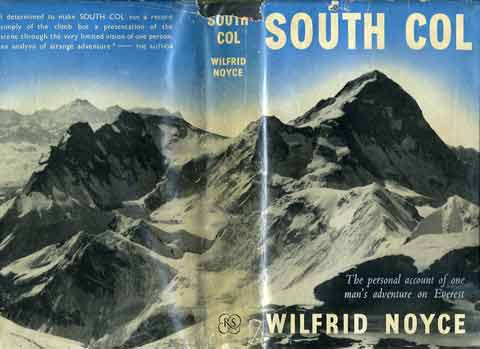
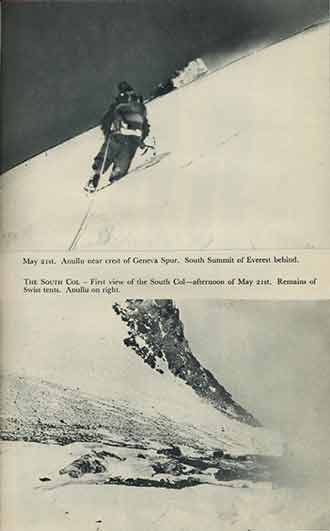
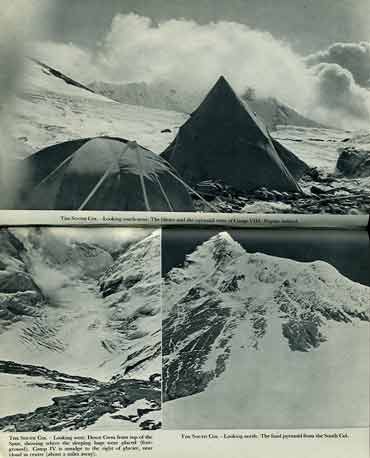
by Wilfrid Noyce. First published 1954. One of Michael Chessler's Top 100 Mountaineering Books. Noyce uses his detailed personal diaries to tell his view of the first ascent of Mount Everest by Edmund Hillary and Tenzing Norgay on May 29, 1953. Wilfred Noyce and Sherpa Anulla pushed the route to the South Col on May 21, 1953. There is a 1-page colour photo, 48 pages of b/w photos, 4 maps, 1 route.
In addition to describing his own activities on the expedition, Noyce also observes the personalities and actions of the other expedition members. John Hunt's strong and well-liked leadership, mountaineering skill, and dedication to their success shine through. After returning exhausted to Camp VII from his summit attempt, Tom Bourdillon still has the energy and thoughtfulness to help Noyce light the stove. "I admired nothing on the expedition more than this little feat." The team gets along extremely well. and 's use of oxygen plays a large part. Noyce describes the challenge on the body to climb at high altitude ("the rest of me laboured painfully, gasped and groaned"), and the struggle on the mind to just to lie in the tent, get up, cook, and clean dishes.
The expedition goes very smoothly from the trek to base camp, climbing through the icefall and up the Western Cwm but they struggle with the Lhotse Face. Noyce finally gets his chance to lead: "However much true virtue may delight in tasks like the bear-leading of Sherpas over the difficulties of a known route, there is a zest of adventure beyond compare in the unknown." Noyce and Sherpa Anulla push the route to the South Col, "and then suddenly nothing was immediately above us any more. We were on a summit, overlooked in this whole scene only by Lhotse and Everest. And this was the scene long-dreamed, long hoped. ... a space of boulders and bare ice perhaps four hundred yards square, absurdly solid."
Noyce again climbs to the South Col on May 29, makes tea and carries it above the Col to assist Hillary and Tenzing on their descent. "George [Lowe] was waving his axe. 'They've done it!!' He pointed his axe towards the top. ... That meant Everest climbed, job done. Good - wonderful. Now we can go down. No more problems. ... Do you know what Ed said when I met him first? George [Lowe] asked, squatting over the cookery. "He said, 'Well, we knocked the bastard off.' " The book closes with nine of Noyce's poems, including A Prayer For Everest, "Others succeed. Here be content, the thought: I have done my part.", and The South Col, "What are men here? What have they done? A heap of rags here, Yellow and Brown."
Noyce describes the expedition in more detail and with more depth of character than Hunt's official book. The book is easy to read, has a good pace, and Noyce keeps things interesting. The photos are very good, especially photos of and from the South Col.
2. The Picture Of Everest
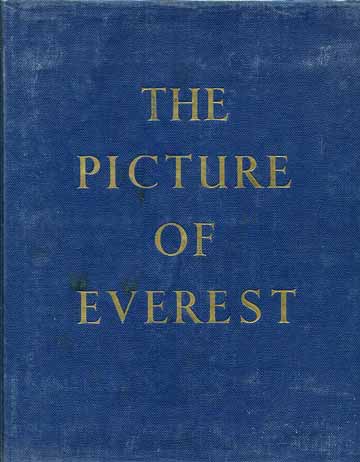
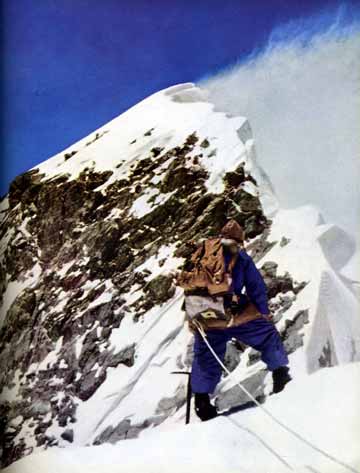
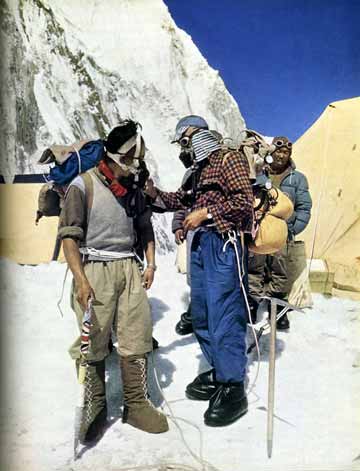
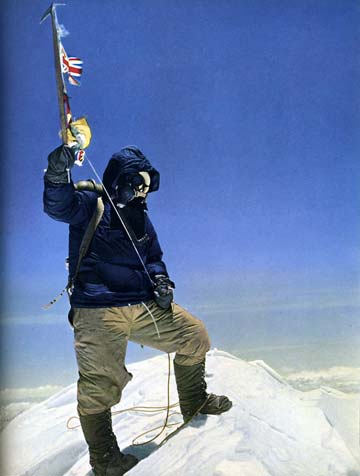
by John Hunt. Published 1954. This larger format photographic book contains the best 43 full-page colour photos from the 1953 Everest British Expedition taken by Alfred Gregory, Edmund Hillary, John Hunt, George Lowe, George Band, Charles Wylie, and Tom Bourdillon. These photos "show the fascinating country of Nepal and the highest mountain in the world."
The photos are excellent. A very good companion book to South Col or The Ascent Of Everest book.
3. Mountaineering In China
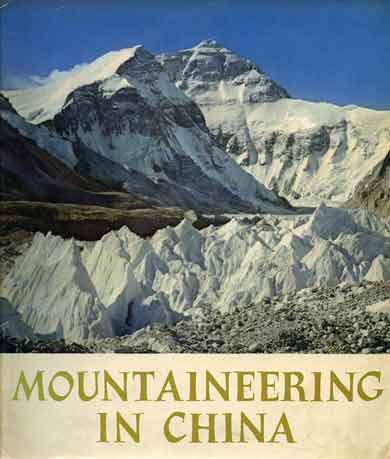


Compiled by the People's Physical Culture Publishing House, 1965. A black and white photographic book detailing the birth of Chinese Mountaineering, and their ascents Minya Konka (1957), Mustagh Ata (1959), the first ascent of the Everest North Face (May 25, 1960), Mount Kongur Tiubie (1961), and Shishapangma (May 2, 1964). The front cover is the Everest North Face.
The chapter on Everest is 44 pages long with two pages in colour, detailing the first ascent of Mount Everest North Face on May 25, 1960 by Weng Fu-chou and Cha Ying-hua from China and Gonpa from Tibet. Climbing at night and running out of oxygen, "Wang Fu-chou resolutely declared, 'We'll press ahead!' 'Sure, we will!' responded Chiu Ying-hua and Gonpa in one voice. ... They wrapped a plaster bust of Chairman Mao Tse-tung in the five-star national flag of China, placed it in the crevice of a great rock to the northwest of the summit"
4. The Ascent of Everest
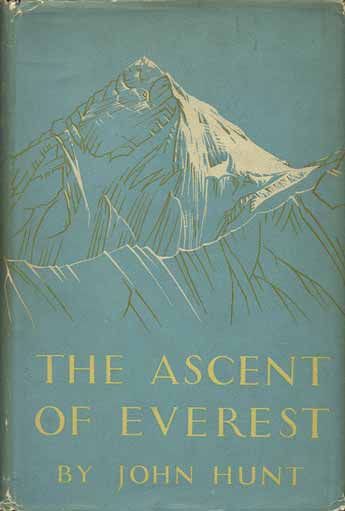
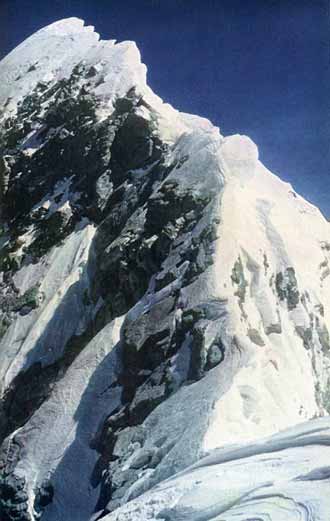
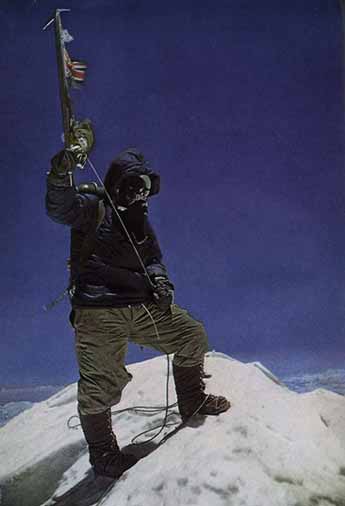
by John Hunt. Published 1953. The British expedition leader describes the first ascent of Mount Everest by Edmund Hillary and Tenzing Norgay on May 29, 1953 at 11:30. There are 8 pages of colour photos, 48 pages of b/w photos, 2 maps, 2 routes, and 27 small sketches. The appendix contains a chonology of the expedition, preparations, plans, equipment, oxygen, diet, physiology and medicine.
John Hunt became the leader of the British Expedition to Mount Everest on Sept. 11 1952. The team members were deputy Charles Evans, Tom Bourdillon, Edmund Hillary, George Lowe, Charles Wylie, Michael Westmacott, George Band, Wilfrid Noyce, Tenzing Norgay, doctor Michael Ward, stills photographer Alfred Gregory. Hunt briefly describes selecting the team, planning, the preparations, and the trek to Base Camp. They fairly quickly solved the first challenge of the Khumbu icefall, and then into the Western Cwm to the foot of the Lhotse Face. The Lhotse Face was a far bigger challeng, taking 12 days before Wilfrid Noyce reached the South Col on May 21, 1953.
The first summit team of Charles Evans and Tom Bourdillon reached the South Summit on May 26, 1953. "Then quite suddenly the angle eased, and almost at once they found themselves standing upon the South summit of Everest, at about 28,700 feet. It was 1 o’clock. Charles Evans and Tom Bourdillon had climbed higher on Everest by many hundreds of feet than anyone had ever climbed before." It was too late in the day so they turned around and descended.
On May 28 the second assault team of Tenzing Norgay and Edmund Hillary reached Camp IX at 8500m. The next morning Tenzing and Hillary left their high camp at 6:30, reaching the South summit at 9:30. Edmund Hillary: "We looked with some interest at the virgin ridge ahead. ... After an hour’s steady going we reached the foot of the most formidable-looking problem on the ridge – a rock step some forty feet high. ... On its east side was another giant cornice, and running up the full forty feet of the step was a narrow crack between the cornice and rock." Hillary climbed what is now called the Hillary Step with Tenzing on belay, and then continued plodding towards the summit. "We shook hands and then Tenzing threw his arm around my shoulders and we thumped each other on the back until we were both almost breathless. It was 11:30 a.m." Hunt thinks the summit success was due to the teamwork of the members, learning from their predecessors, detailed planning, and excellent equipment, especially the oxygen. Hunt: "The ascent of Everest seems to have stirred the spirit of adventure latent in every human breast."
The writing is very straightforward, a bit boring at times. The photos are very good.
5. Alfred Gregory's Everest
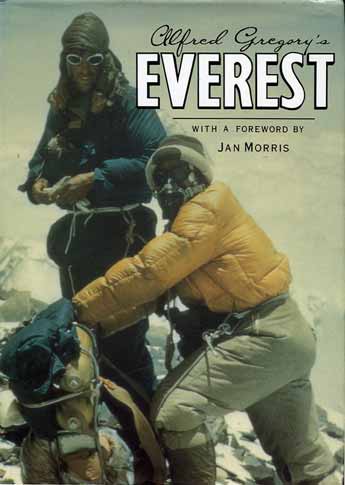
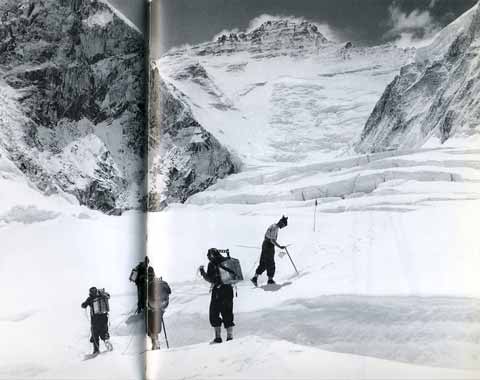
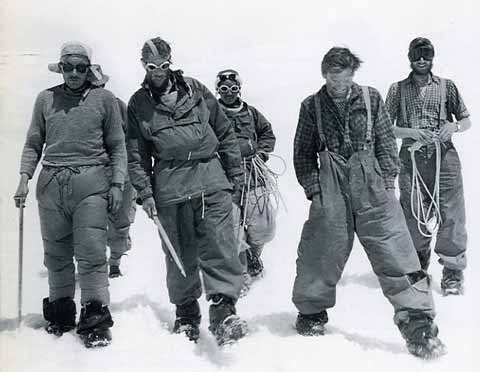
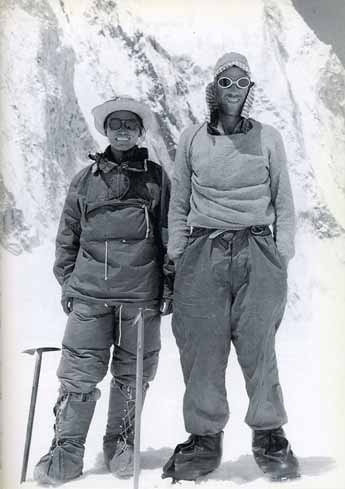
by Alfred Gregory. Published 1993. The offical stills photographer of the 1953 Everest British Expedition, Alfred Gregory has captured 113 b/w photos, full page or larger, in this photographic book about the first ascent of Mount Everest. Gregory climbed all the way to 8320m and therefore does does not have any photos of the Everest South Summit, the summit ridge or the summit.
The photos are very good.
6. John Hunt Our Everest Adventure
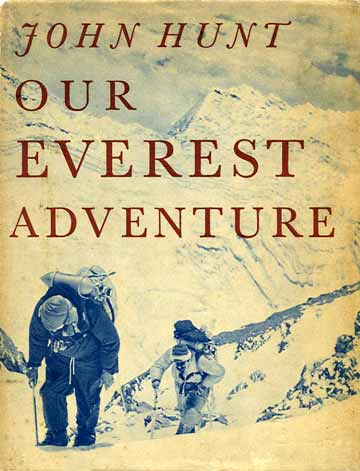
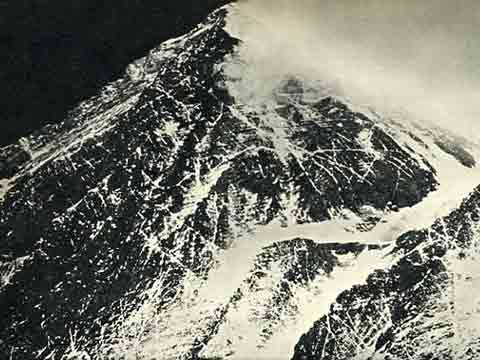
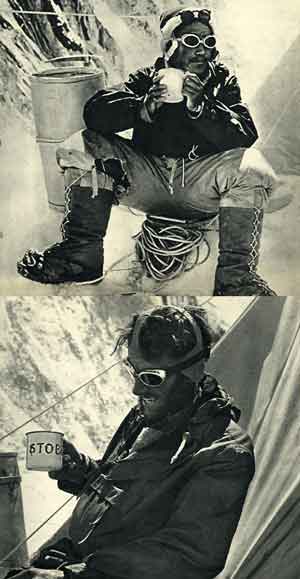
Published 1954. The pictorial history of the 1953 Mount Everest British expedition from Kathmandu to the summit. This larger format mainly photographic book has about 150 b/w photos, 2 maps, and 3 sketches. Most of the photos are different from The Ascent Of Everest book. The text is short excerpts from John Hunt's The Ascent Of Everest book.
The photos are very good.
Books On Everest
1A. Into Thin Air: A Personal Account of the Mount Everest Disaster (The Illustrated Edition)
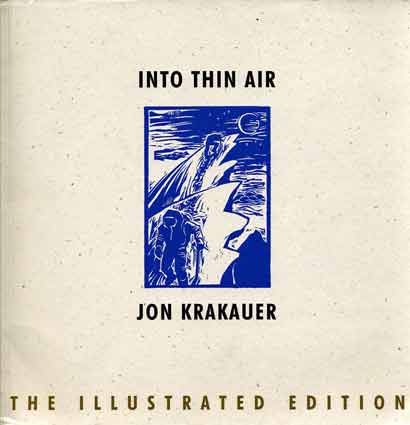
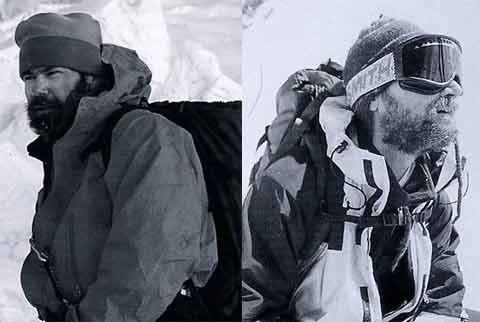
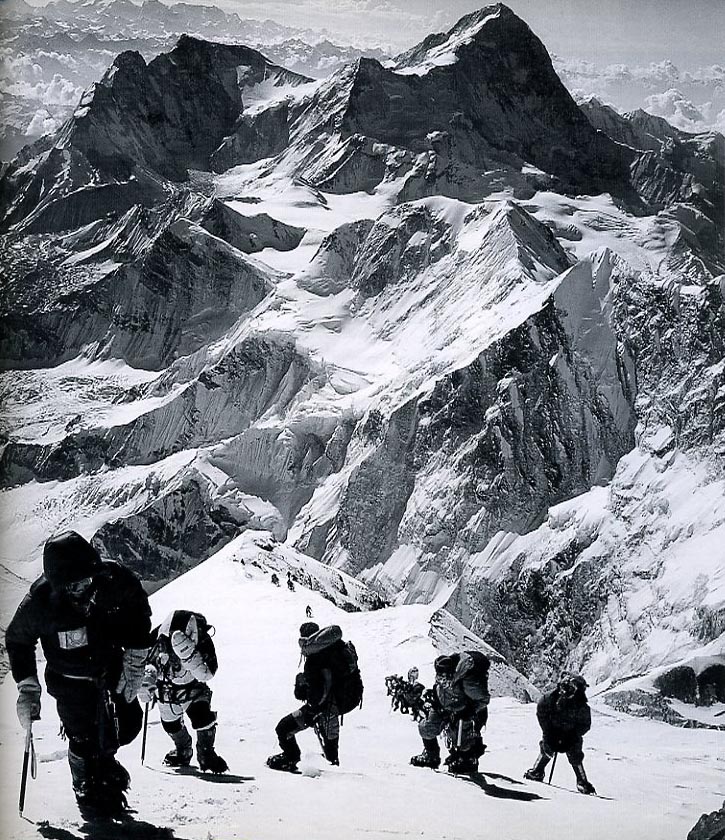
by Jon Krakauer. Published 1997. The illustrated edition was published 1998. One of Michael Chessler's Top 100 Mountaineering Books. My personal favourite mountaineering book of all time. Krakauer provides a day-by-day journal to tell the chilling, harrowing and controversial story about the 1996 Everest season when 12 climbers were killed. He describes the trek to Everest Base Camp, the acclimatization climbs to Camps One, Two and Three, the final climb by 34 climbers towards the Everest Summit, the descent to the South Col, the killer storm, the rescues and failed rescues, and the descent off the mountain. The Illustrated Edition contains almost 250 b/w photos to bring the story to visual life. The photos are by Jon Krakauer, Neil Beidleman, Klev Schoening, Scott Fischer and others.
"In March 1996, Outside magazine sent [Jon Krakauer] to participate in, and write about a guided ascent of Mount Everest", on Rob Hall's Adventure Consultants expedition. In addition to Hall's eight clients, Scott Fischer's Mountain Madness guided expedition also had eight clients. Scott Fischer: "We've got the big E figured out ... we've built a yellow brick road to the summit." Krakauer did reach the Everest summit on May 10, 1996 at 13:10. Worrying about his dwindling oxygen, he left the summit after just five minutes, finally making it back to his tent on the South Col at about 18:45, "more exhausted than I'd ever been in my life." "The storm abruptly metastasized into a full-blown hurricane, and the visibility dropped to less than twenty feet ... nineteen men and women were stranded up on the mountain by the storm, caught in a desperate struggle for their lives."
Two guides, two Sherpas, and seven clients had reached the South Col, but "staggered blindly around in the storm, growing ever more exhausted and hypothermic." In a small break in the storm, Camp Four was slightly visible. "Pittman, Fox, Weathers, and Namba were too feeble to walk", so Neil Beidleman, Klev Schoening, Lene Gammelgard, the two Sherpas, and Mike Groom stumbled off into the storm, making it back to the tents on May 11 at 00:45. Fisher's guide Anatoli Boukreev had descended to Camp Four in advance of his clients, and was the only strong climber left. Boukreev courageously single-handedly attempted to brave the storm to rescue the missing climbers, but had to return to the tents. But Boukreev didn't give up. He went out again by himself and was able to find the climbers, and brought back first Charlotte Fox and then Sandy Pittman and Tim Madsen. Yasuko Namba was dead and Beck was a lost cause.
Rob Hall waited for Doug Hansen to reach the summit at around 16:00, but Hansen turned into a "zombie" on the descent. Andy Harris picked up oxygen from the South Summit and walked back up towards Hall and Hansen. "at 4:43 on the morning of May 11 ... [Hall] had descended to the South Summit. And at that point neither Hansen nor Harris was with him." The continuing storm on May 11 stopped the Sherpa's rescue attempt. Rob's pregnant wife in New Zealand was patched through to speak to Rob late on May 11, " 'I love you. Sleep well, my sweetheart. Please don't worry too much.' These would be the last words anyone would her him speak."
Scott Fischer was not very strong on summit day, and reached the summit late at 15:40. Lopsang Jangbu Sherpa was able to help Fisher descend, but he collapsed just below the Balcony about 400m above the South Col. Anatoli Boukreev reached Fisher late on the evening of May 11. "Down suit is unzipped, pulled off his shoulder, one arm is outside clothing. There is nothing I can do. Scott is dead."
Amongst the tragedy, there was a ray of joy. Beck Weathers collapsed on the South Col late on May 10 and was left for dead. Miraculously he regained consciousness on May 11 and stumbled back to Camp Four at 16:35 with his "bare right hand, naked to the frigid wind and grotesquely frostbitten ... outstretched ... [looking like] a mummy in a low-budget horror film." Beck miraculously survived the night and the IMAX team with David Breashears and Ed Viesturs helped him descend to Camp Two the next day. Lt. Colonel Madan Khatri Chhetri rescued Beck from Camp Two in his helicopter on May 13.
Krakauer's writing is excellent, providing enough information, but keeping the story tight and to the point. He provides his inner thoughts and comments candidly on his own performance and mistakes, and the other clients and guides. Rob Hall's last minutes speaking to his wife are almost too heartbreaking to read. The photos are absolutely excellent. Although Krakauer is critical of Anatoli Boukreev's guiding practices, he fully acknowledges Toli's extraordinary performance in single handedly rescuing three clients during the storm. For a rebuttal from Anatoli Boukreev, read The Climb.
1B. The Climb: Tragic Ambitions on Everest
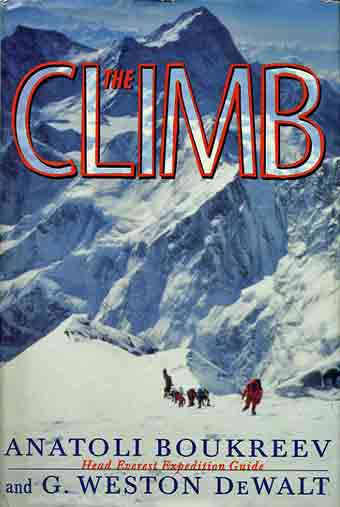
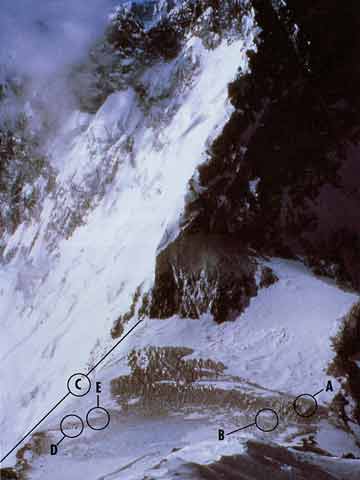
by Anatoli Boukreev and G. Weston DeWalt. Published 1997. Boukreev tells his side of the 1996 Everest tragic events in this rebuttal to Jon Krakauer's Into Thin Air book. The book provides additional insights into the tragic events using quotes from 9 climbers from a debrief back at Everest Base Camp on May 15, 1996. There are 13 pages of colour photos, a one-page bw photo, 1 map, and 1 route diagram.
The book describes how Toli became a guide for Scott Fischer's Mountain Madness first attempt at guiding Everest. He describes the build up to the expedition like getting the permit and arranging for the oxygen bottles, and then the trek to Base Camp and the acclimatization climbs. Boukreev was not a hand-holding kind of guide. Boukreev: "Some of [the clients] ... had the idea that a guide should control all the situations they might encounter. I would just wonder, 'What is going to happen to them when there is nobody to hold their hands.'"
Boukreev climbed towards the summit on May 10 without oxygen. He took charge at the South Col and personally roped the knife-edge Southeast Ridge and the Hillary Step. Boukreev stayed on the Everest Summit on May 10, 1996 from 13:07 to about 14:00, and then descended ahead of his clients. Toli briefly spoke to Fisher at the top of the Hillary Step. "the most logical thing for me to do was to descend to Camp IV as quickly as possible, to stand by in case our descending climbers needed to be resupplied with oxygen. ... [Fisher] saw our situation the same way and we agreed that I should go down." Boukreev reached Camp IV on the South Col at around 17:00.
The story continues with the slow descent to below the Balcony, the rising storm, and the 'dogpile' of guides, Sherpas, and clients wandering around the South Col. As the tragedy unfolded, Boukreev single-handedly braved the storm to rescue three of the climbers. At around 19:00 on May 11, Boukreev reached Scott Fischer who had collapsed just below the Balcony. "I saw the zipper of his down suit open, one hand without a mitten, frozen. ... I can do nothing. I can do nothing."
The writing is fairly straightforward. I liked reading Boukreev's personal observations. The photos are very good. Sadly, Anatoli Boukreev died when an avalanche hit him on December 25, 1997 on the Annapurna South face.
2. Everest: Kangshung Face (also called Everest: Alone at the Summit)
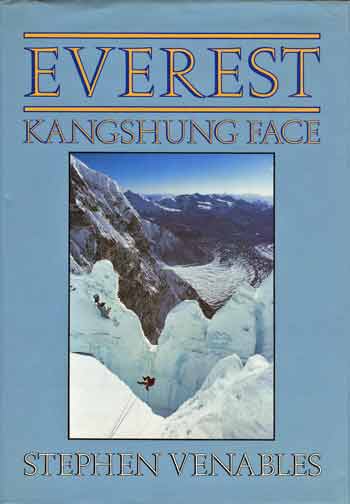
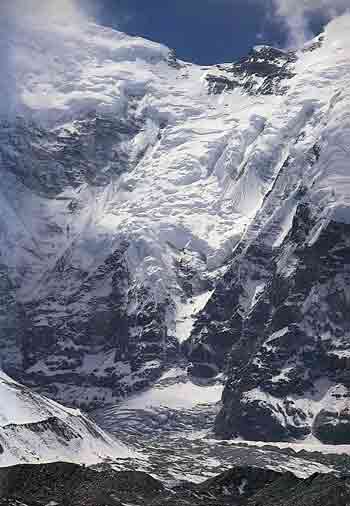
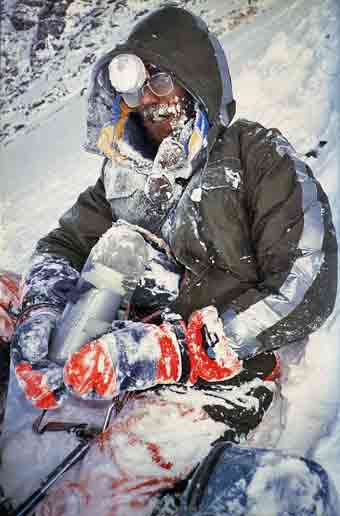
by Stephen Venables. Published 1989. This book starts off almost as a guide book for the trek to the little known and little climbed Everest East, or Kangshung face. The trek is spectacular, with the culmination being the best mountain view in the world in my opinion: Chomolonzo, Makalu, Kangchungtse, Petangtse, Shartse, Lhotse Shar, Lhotse, the South Col, and the dramatic snow covered Everest east face.
The 1988 climb itself is dramatic and dangerous, illustrated with spectacular photos, like the one on the cover showing a Tyrolean traverse across an enormous crevasse. Stephen Venables reached the summit of Mount Everest on May 12, 1988, only the second summit from the Kangshung East side. Venables descent from the summit in a blizzard is as chilling and frightening as Maurice Herzog's Annapurna, with Stephen having to bivouac just below the summit. At one point in his descent, he sits in the snow and considers just staying there and dying.
The story is very exciting. The photos are excellent. I had the pleasure of briefly meeting Stephen Venables on my trek to Kangshung Face in 1998.
3A. Ghosts of Everest: The Search for Mallory and Irvine
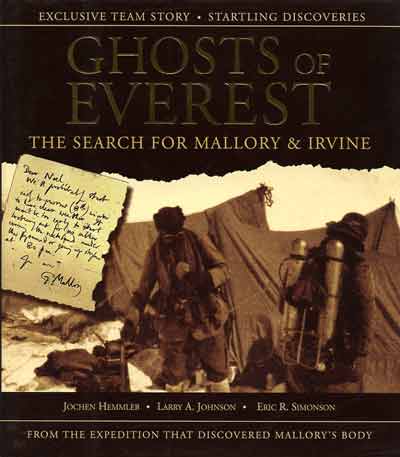
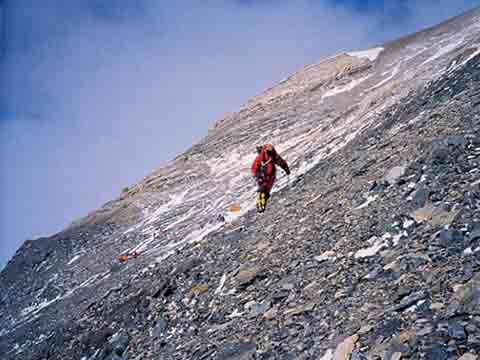
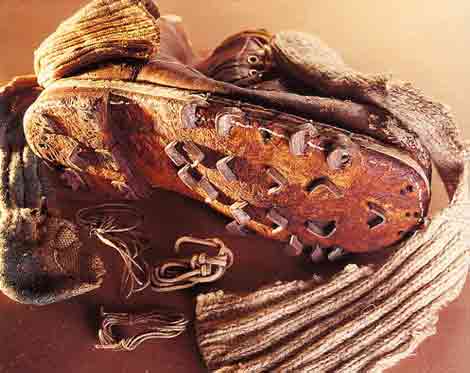
by Jochen Hemmleb, Larry A. Johnson, Eric R. Simonson, William E. Nothdurft. Published 1999. The 1999 Mallory and Irvine Research Expedition discovered the body of George Mallory high on Mount Everest. And what a sight it was - his alabaster body perfectly preserved with his beard stubble still visible.
The book contains the known history of June 6, 1924 along with Jochem's atempt to piece together what might have happened. The photographs of Mallory and his personal effects, including his boot, watch, letters and pocket knife, are fascinating.
3B. An Afterclap of Fate: Mallory on Everest
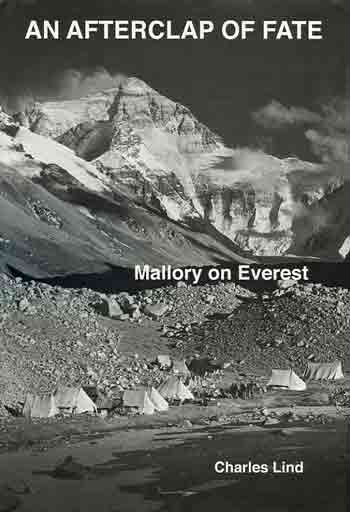
by Charles Lind. Published 2006. The perfect companion book to Ghosts of Everest (or is it the other way round?). In this winner of the 2006 Boardman Tasker Prize, Lind reconstructs Mallory's fateful 1924 climb, beautifully written in almost a poetic style. He tells the story from the perspective of what he thinks Mallory may have been thinking, basing it on Mallory’s letters, what is known of his life and climbing ability, and the findings of the 1999 expedition that found his body. He also provides lots of background on the times that Mallory lived in to help explain what he is thinking. Here are a few of my favourite excerpts:
We come to the mountains to live life more intensely … to be in the full current of the concentration of our vital senses … not to die but to experience the marrow of our being.
Let’s start to look for cracks in the rock, the natural fault lines in its defences. ‘It’s only difficult if it’s not impossible’.
If I should die … think only … some snowy terrace of a foreign mountain … forever England ... I must get back … back to England
To speak the name of the dead is to make them live again …
4A. The Crystal Horizon: Everest - The First Solo Ascent
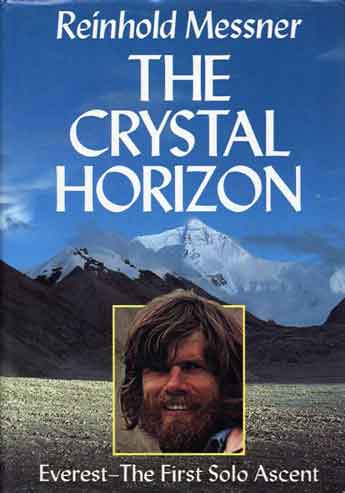
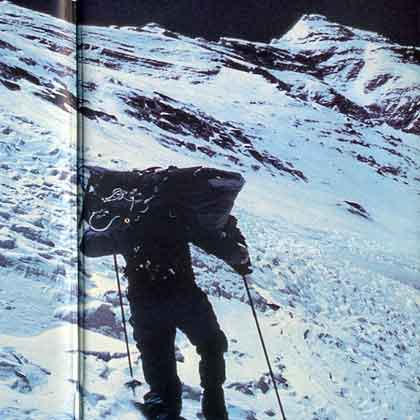
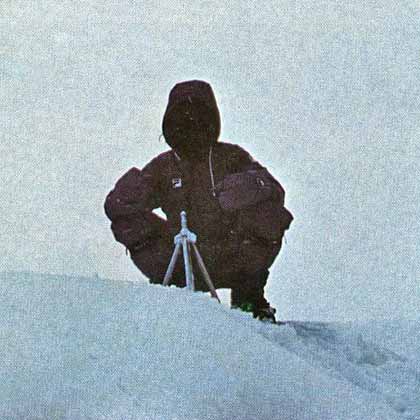
by Reinhold Messner. Published in German in 1982 and in English in 1989. Just two years after breaking the oxygen barrier by climbing Everest from Nepal without the aid of oxygen in 1978, Messner ups the ante by climbing alone, without oxygen, and alpine style up the North Face of Everest in the summer months of 1980. He carried only a tent, camera, two ski sticks and an ice axe, and food. His base camp is just him and a female friend. There are 40 pages of colour photos, 43 pages of b/w photos, and over 175 b/w photos in-line with text.
Messner fell into a crevasse before even starting the climb to the North Col. "I am falling into the depths and experience the fall in slow-motion, strike the walls of the widening crevasse once with my chest, once with my rucksack." Luckily he landed on a snow bridge and was able to climb out and continue the climb. He veered off the normal North Face route above the North Col and climbed the Norton Couloir. "I know of no mountain, no other region from which there is such an infinite view as from Mount Everest across the Tibetan plateau."
"During the ascent I am like a walking corpse. What holds me upright is the world around me: air, sky, earth, the clouds. ... No despair, no happiness, no anxiety. I have not lost the mastery of my feelings., there are actually no more feelings. ... Above me nothing but sky. I sense it." Reinhold Messner completed the first solo climb of Mount Everest when he reached the summit on August 20, 1980 at 3pm.
Messner's writing is interesting and poetic, letting us know his feelings and inner-most thoughts. The photos are very good and help illustrate the story, including photos from the 1920s and early Everest attempts, of Messner's trip from Lhasa to Base Camp, the climb and on the summit in a whiteout.
4B. To The Top Of The World
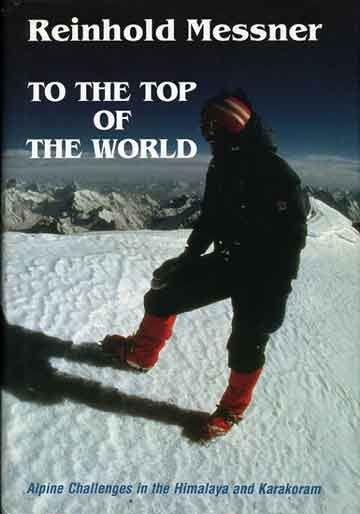
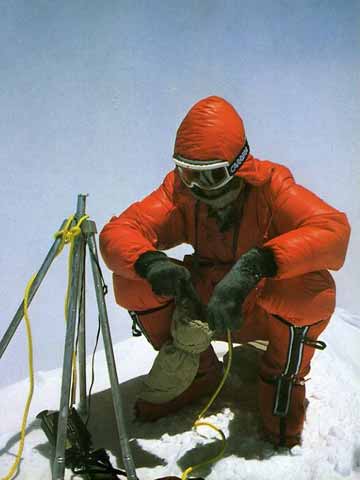
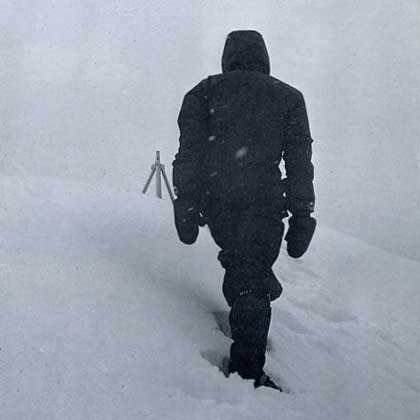
by Reinhold Messner. First published in English in 1992. The book briefly describes Messner's ascents of Manaslu in 1972, Gasherbrum I (Hidden Peak) in 1975, Everest without oxygen in 1978 and solo in 1980, Nanga Parbat solo in 1978, K2 in 1979, and the traverse of Gasherbrum II and I in 1984. The cover is the summit of K2. There are 56 pages of colour photos, 20 pages of b/w photos, 26 b/w photos in-line with text, and six colour paintings by French artist Jean-George Inca highlighting the stories in the book.
The chapter on Everest without oxygen in 1978 has 8 pages of colour photos, a 2-page colour painting by Inca, and is 15 pages long with a 1-page b/w photo, 3 b/w photos in line with text, and a 1-page drawing of his 1978 climbing route. The story begins with Messner climbing the Lhotse Face, and tape recording a conversation with Peter Habeler on the South Col. Even though the weather was bad and the snow deep, they made it to the South Summit in good time. "Breathing was so strenuous that strength scarcely remained for us to continue." Reinhold Messner and Peter Habeler completed the first ascent of Mount Everest without oxygen when they reached the summit on May 8, 1978.
"I was no longer my normal perceptive self, rather a single, tight, coughing lung, floating above mists and summits. ... The instant Peter reached me and hugged me, we both burst into tears and lay there in the snow, wracked with emotion. ... Everything that is, that I am, was based on my knowledge that I had reached the top. The summit - at least temporarily - was my naive, intuitive answer to the question of existence."
The chapter on Everest solo in 1980 has 8 pages of colour photos, a 1-page colour painting by Inca, and is 43 pages long with 8 pages of b/w photos, 4 b/w photos in line with text, and a 2-page drawing of the different Everest ascent routes. "In the blue of the night Mount Everest stood over me like a magic mountain. No brooding, no asking why; I prepared myself with every fibre of my being for my big effort." Messner carried only a tent, camera, two ski sticks and an ice axe, and food on his Everest solo climb. Messner fell into a crevasse before even starting the climb to the North Col. Luckily he landed on a snow bridge and was able to climb out and continue the climb. He veered off the normal North Face route above the North Col and climbed the Norton Couloir. "Day after day, hour after hour, minute by minute, step by step, I was forcing myself to do something against which my body rebelled. ... I no longer felt real. I was a creature shifting in space and time. Nevertheless, I kept moving."
Reinhold Messner completed the first solo climb of Mount Everest when he reached the summit on August 20, 1980. "It was after three o'clock. Like a zombie obeying an inner command, I took some photographs. ... I squatted down, feeling as heavy as a stone. I just wanted to rest a while and forget everything."
If you want a Best Of Messner book, this is a great choice. The stories are short and action packed. The photos are very good. Messner's writing is interesting and poetic, letting us know his feelings and inner-most thoughts.
5. Everest: The History of the Himalayan Giant
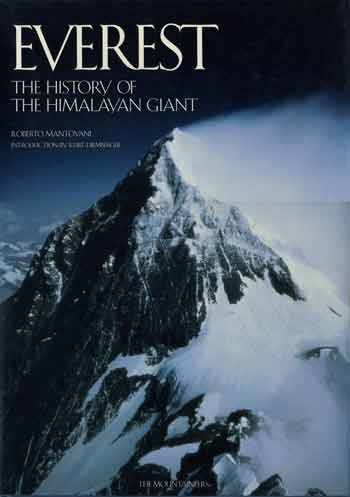
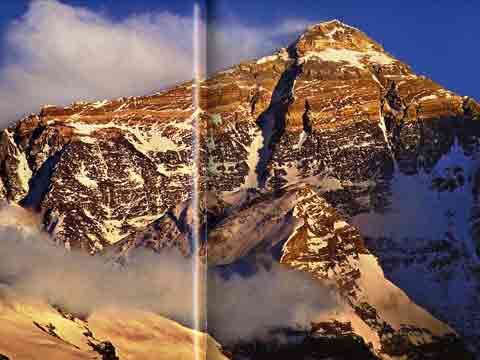
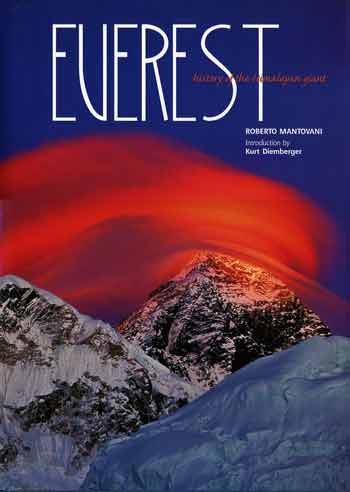
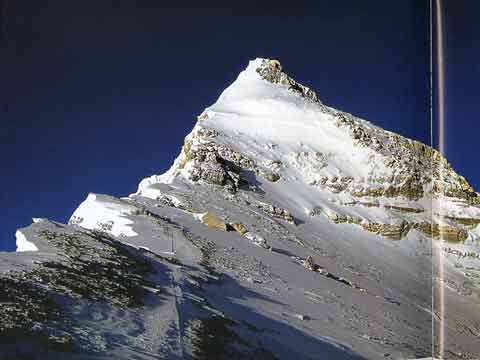
by Roberto Mantovani, introduction by Kurt Diemberger. Originally published in 1997, this book was republished in 2007, with 36 pages added with updates for the climbs from 1995 to 2006, including even more spectacular photos.
This is an excellent coffee-table type book with spectacular photos and some good information. The book contains a detailed history of the discovery of the mountain by Sir George Everest, the attempts to climb Everest over the years from Mallory to Hillary, and the significant climbs since then.
6. Everest The Hard Way: The First Ascent Of The South West Face

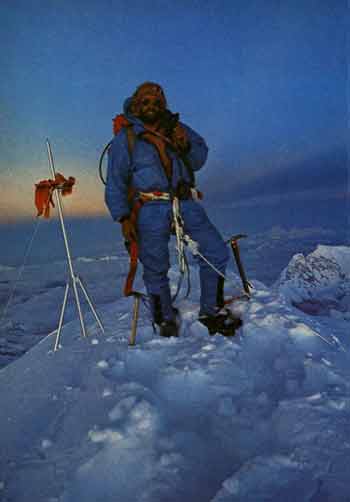
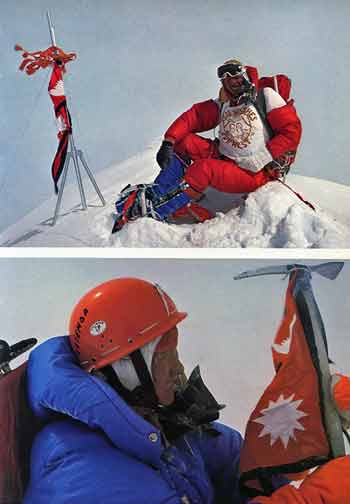
by Chris Bonington. Published 1976. The over 80 pages of colour photos, including spectacular ones as Doug Scott and Dougal Haston climb the Hillary Step, climb towards the summit and stand on the summit as the sun goes down, are enough to buy this book. Note that the original US edition of this book is slightly smaller than the England version and has less photos.
I found Chris's personal experiences and writing a bit dry at times, a littler too logistical. I liked the sections from the diaries of climbers, which gave glimpses of their thoughts and personalities. The summit day was entirely written by Doug Scott and Dougal Haston. The Appendix sections on the logistics of the expedition fill almost half the book, and are not overly interesting.
This large scale expedition combined the effort of 40 Sherpas, 16 climbers, and Chris Bonington's planning, to get the summit climbers into position. Although he didn't have a chance at the summit, Nick Estcourt was instrumental in solving the problem of the Rock Band and had led the most difficult pitch on the face.
On September 24, 1975 Doug Scott and Dougal Haston successfully made it to the summit. Doug: “All the world lay before us. The summit was everything and more that a summit should be. My usually reticent partner became expansive, his face broke out into a broad happy smile and we stood there hugging each other and thumping each other’s backs. … the view was so staggering, the disappearing sun so full of colour that the setting held us in awe." They descended to the South Summit and survived a bivouac in a snowcave.
On Sept. 26 Pete Boardman and Sirdar Pertemba reached the summit and descended in a gathering storm, where they encountered Mick Burke just below the summit. But tragedy struck - Burke wasn't seen again. Martin Boysen: “At first I could hardly accept Mick’s death; I clung to slender hope, but with each passing hour all hope disappeared, torn and blown away by the raging winds and blizzard."
7. Everest: Mountain Without Mercy
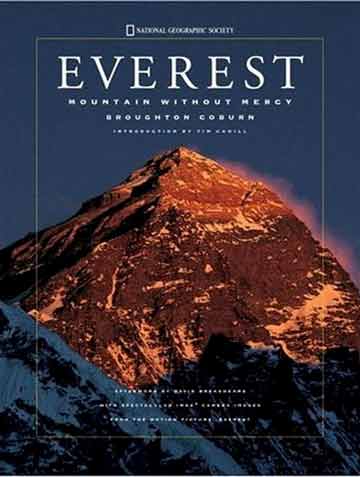
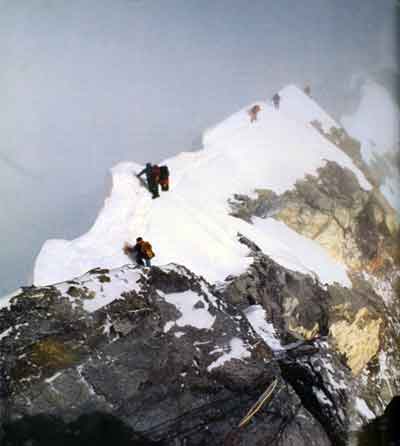
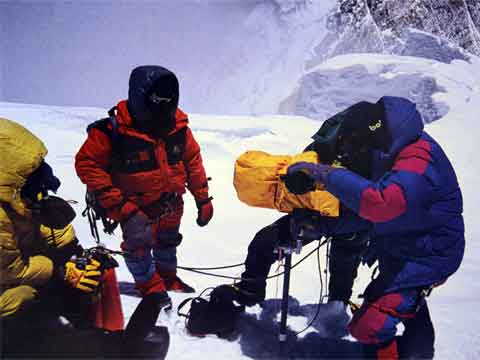
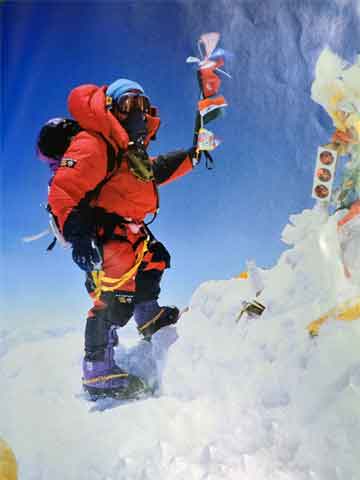
by Broughton Coburn, David Breashears (Afterword), Tim Cahill (Introduction). Published 1997. A second companion book to Jon Krakauer's Into Thin Air, this coffee-table-type photographic book details David Breashear's climbing team, led by Ed Viesters and featuring , and his filming team in the making of their wildly successful IMAX Everest movie. They put their own summit plans on hold to participate in the rescue of the climbers in the 1996 Everest disaster. The story of survivor Beck Weather is astounding. Ed Viesturs, David Breashears, Jamling Tenzing Norgay, Robert Schauer, and Araceli Segarra reached the Everest summit on May 23, 1996.
The book also provides information about Nepal, Buddhism, Sherpas, and a climbing history of Everest.
8. White Limbo: The First Australian Climb of Mount Everest
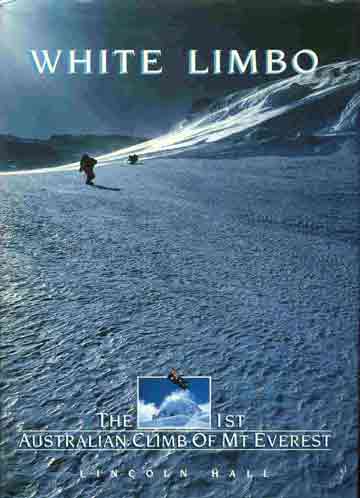
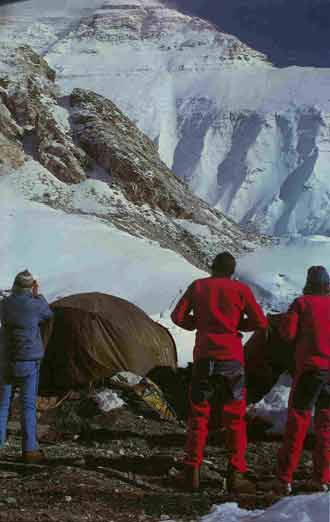
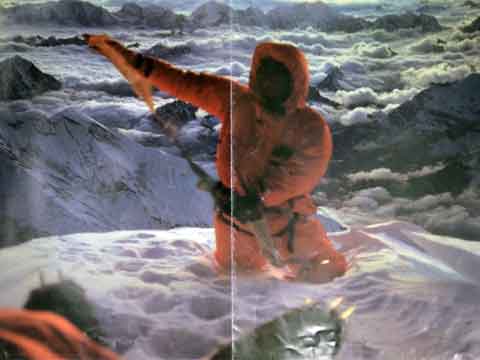
by Lincoln Hall. Published 1995. This book features spectacular photos from Colin Monteath. In 1984 five young Austrailians chose a new route up the North Face, climbing through the huge central snowfield, dubbed “White Limbo,” to gain the Great Norton Couloir. They climbed alpine-style without the aid of artificial oxygen. "At 7:45 p.m. Tim and Greg reached the West Ridge. A couple of apparently insignificant rock bands had given more involved climbing than planned and that had slowed them down. But now the North Face had been climbed. The final snow slope to the summit took another half an hour. Just on sunset, shortly after eight o'clock, Greg and Tim stood on top of the world." Tim McCartney-Snape and Greg Mortimer became the first Australians to climb Everest when they stood on the summit at sunset on October 3, 1984. Tim: "Well, this is the summit of Mt Everest ... Qomolangma ... Mother Goddess of the Earth. It's the most beautiful sunset I've ever seen."
Lincoln turned back at 8300m with cold feet, and on the last page of White Limbo he wrote, "Though I shall never see the summit panorama other than through the eyes and hearts of Tim and Greg, I know that no view is worth that price." Lincoln returned to try Everest again in 2006, and made international news when he was rescued from the Second Step at 8700m on the North face, after being pronounced dead the previous evening.
9. Dead Lucky
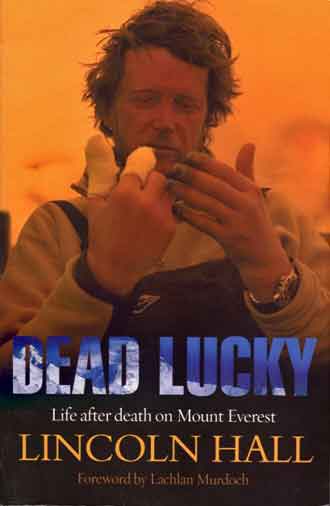
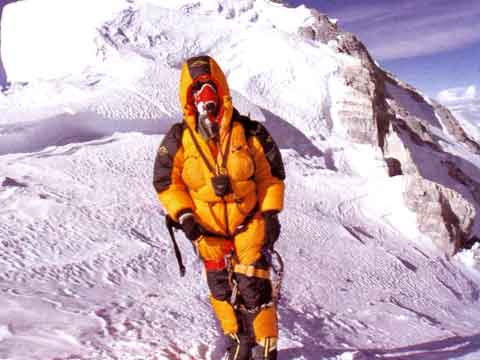
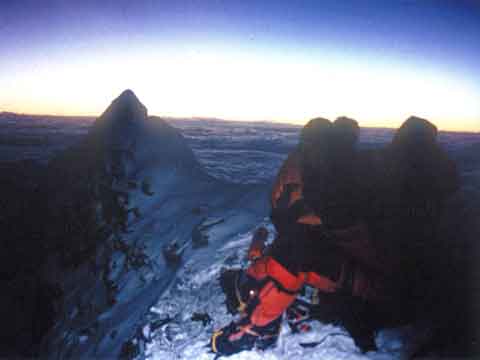
by Lincoln Hall. Published in 2007. Hall tells the story of his miraculous survival when he was presumed dead high on the Mount Everest North Face in 2006. There are xx pages of colour photos.
After a failed attempt in 1984, Lincoln Hall returned to Everest in 2006 to be the camera man for an attempt by a young Australian. Hall describes the drive to base camp, the acclimatization climbs, and the many deaths on the mountain in 2006, including David Sharp. When his client dropped out, Hall continued the climb and reached the Everest summit on May 25 at 9am. "The crest of the summit itself rose like a small breaking wave, creating a final half-metre-high step. I paused for an extra breath then stepped up onto the highest point on the planet. Eight thousand, eight hundred and fifty metres. I was alone on the roof of the world."
On the descent after passing the Third Step, Hall collapsed, becoming: "a delirious, unaccomodating person ... staggering a few steps, collapsing in the snow, muttering nonsense, refusing to cooperate." The Sherpas tried dragging him down the mountain, but gave up as night approached. "After lying totally motionless in the snow at 8600 metres for two hours, I had been pronounced dead, with the probable cause of death being cerebral oedema."
"I was no longer capable of distinguishing between the reality of the mountain and the fabrications of my mind. ... I was exhausted, frostbitten and alone on the summit ridge of Everest. I had begun the decline, which would finish with me freezing to death. ... The horror of this realization snapped me into complete lucidity. I knew I had to escape from this awful predicament."
Hall contrasts what is happening to him on Everest with his wife, family and friends, who were told he was dead. The next morning Dan Mazur, Andrew Brash, Myles Osbourne, and Jangbu Sherpa found Hall, who was able to speak coherently with them, but still suffering hallucinations. They compassionately put off their own summit attempt to stay with Lincoln for hours until two Sherpas could arrive to lead him down. The descent turned into a nightmare when the two Sherpas threatened him if he didn't keep going down, and eventually did hit him with their ice axe. Hall was happy to meet the other Sherpas and made it to the North Col at dusk on May 26. Hall finishes the book with his trip back to base camp, Kathmandu, and dealing with all the press attention in Kathmandu and back home in Australia, and some conjectures on why he survived while others died.
I like Hall's writing style - engaging, simple, straightforward, and to the point. Hall describes in chilling vivid detail his hallucinations as he struggled to survive. The photos are very good.
10. Everest: The West Ridge
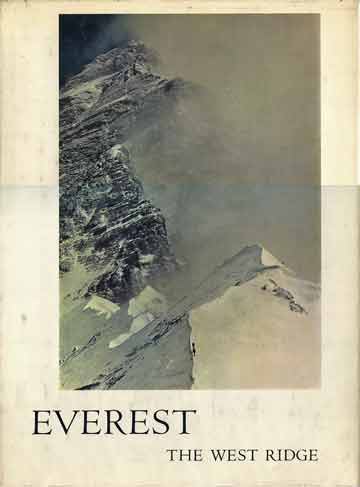
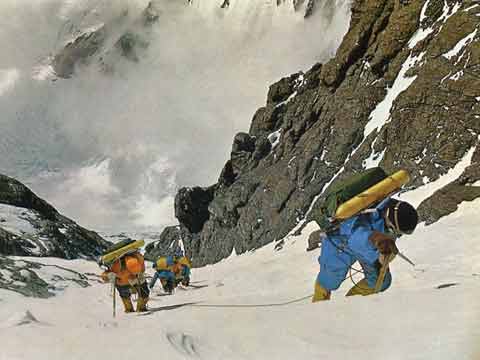
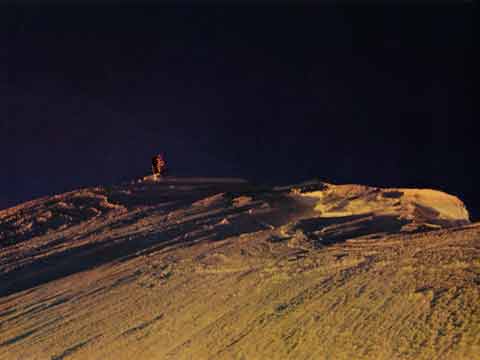
by Thomas Hornbein. Published 1965. If you can, get the first edition of this book published in 1965 by the Sierra Club - it's a huge coffee-table sized book with the colour photos printed on special lithograph paper.
The 1963 Mount Everest Expedition had two major successes. First, Jim Whittaker became the first American to summit Everest on May 1, 1963, via the South Col. The second was a major feat of mountaineering, when Thomas Hornbein and Willi Unsoeld summitted Everest on May 23, 1963 by the extremely difficult West Ridge. Before summiting they had to move onto the North face, climbing what is now called the Hornbein Couloir. They then traversed the mountain and descended via the South Col route, having to bivouac near the summit without any food, supplemental oxygen, or shelter.
"What possible difference could climbing Everest make? …Was I greater for having stood on the highest place on earth? …It had been a wonderful dream, but now all that lingered was the memory. The dream was ended… The goal, unattainable, had been attained. Or had it?" - Thomas Hornbein.
11. Everest & Oyu
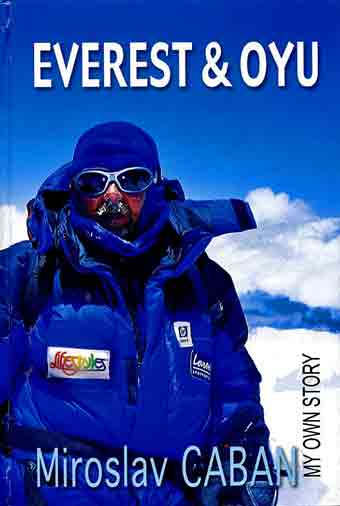
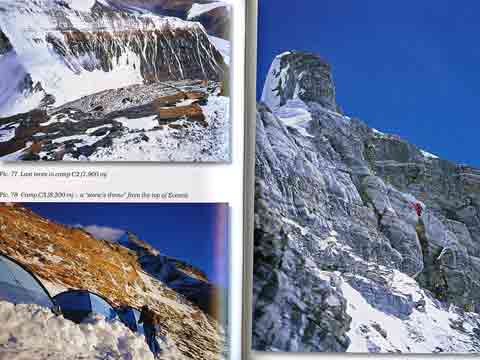
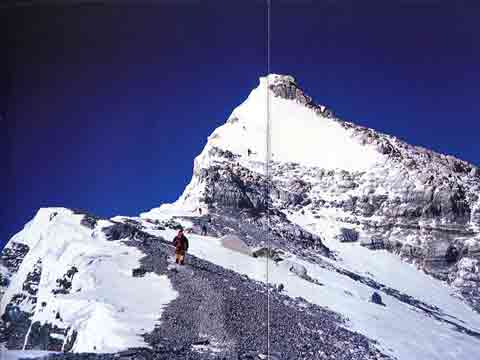
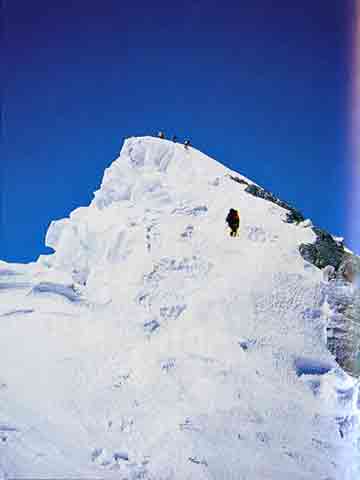
by Miroslav Caban. Published 2005. The book describes the author's Cho Oyu attempt and successful Everest North Face summit in 2002. He includes details of the changing weather forecasts and excerpts from his expedition log and copies of Emails from home. "There's the soul, the mind, and the body, working together in perfect harmony, striving for maximum teamwork, the goal of which is a short moment spent at the top spot of the planet." There are 56 pages of colour photos, 2 of them 4-page panoramas. There are 16 pages of colour photos dedicated to the Cho Oyu attempt.
The book starts with Miroslav Caban and his climbing partner Milos Palacky flying to Kathmandu and Lukla to attempt an acclimatizing trek to Moro La. After returning to Kathmandu, they drive to Tingri in Tibet and Cho Oyu Base Camp, and trek to Cho Oyu Advanced Base Camp (5700m). They acclimatize by climbing to Camp I (6400m) and Camp II (7200m) where "The weather turned incredibly fast. It was a hurricane in the Himalayas with winds of over 200 km/hour." After surviving three days pinned down by the storm they retreated to base camp, and after a rest started their last try at the summit. They struggled through deep snow, making it to 7800m before turning around because it was too late and their primary goal was to acclimatize for Everest. "This was our victory - a safe return."
After a brief rest in Tingri, they drive to Everest North Base Camp, and trek to Everest ABC (6400m). They climb to the North Col, where their porter deserts them. They ask their expedition agent to find another porter, and Milos waits for him at the North Col while Miroslav continues alone to Camp II (7500m), "determined to undergo the battle for the summit with all my powers, both physical and mental". Milos feels sick and decides not to continue, while Miroslav continues to Camp III (8300m). The new porter arrives, carrying only a bit of food, but no tent. Miroslav tries to persuade other mountaineers and Sherpas to let him sleep in their tents, but to no avail. He has to pay a Sherpa $100 to let him sleep in his tent.
Miroslav continues climbing alone without oxygen towards the summit. As he nears the summit, he sits down "I couldn't hold it back: exhaustion, sentiment, and joy brought water to my eyes. Now I'm gushing tears like a little kid, but I'm not ashamed. My life's goal is before my eyes." Miroslav Caban reached the Everest summit at 11:30 on May May 17, 2002. "The weather is beautiful. I step onto it with my right foot. My fantastic dream has become a reality. Here I am on the highest spot on the planet. ... The warm feeling of satisfaction I had from having organized the whole expedition myself heated my body."
The photos are absolutely excellent. This is a very entertaining, humorous and exciting read. His emails from home remind you that daily life continues at home, and accentuates the loneliness he often feels. Miroslav comes off a bit naive at first, getting sick drinking water, people ripping him off, hassles with jeep drivers and yak herders, and porters deserting him. Despite a very small budget that causes many issues, especially with porters, the author adapts to each new situation and preservers his seat-of-the-pants climb.